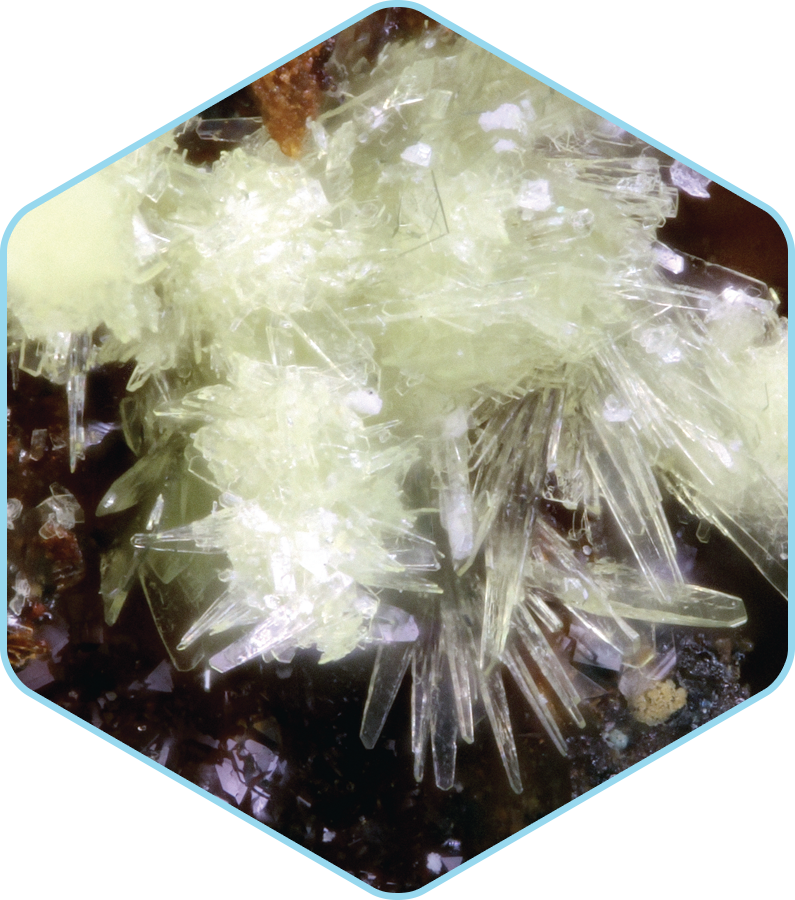Discovery Team
Travis A. Olds
Luke Sadergaski
Jakub Plášil
Anthony R.Kampf
Peter C. Burns
Ian M.Steele
Joe Marty
5
Leószilárdite
Verified June 2016
Na6Mg(UO2)2(CO3)6·6H2O
Leószilárdite, a rare, ephemeral, and water-soluble uranyl carbonate mineral, was a particularly exciting discovery. Uranyl minerals are radioactive and have distinctly vibrant colors with many species brightly fluorescing under ultraviolet light. In groundwater, uranium is often carried alongside carbonate, with the potential for uranium to be transported for long distances. Named in honour of Leó Szilárd, Hungarian-born physicist and inventor (1898–1964). It was found in a single area of the Markey Mine, on a seam of C-rich material deposited by an ancient stream. After mining ceased, groundwater ate away at the uraninite ore within this seam and produced abundant U-carbonate secondaries like andersonite, bayleyite, and čejkaite, with very minor leószilárdite. There was only a single specimen with diffraction worthy crystals from that trip (shown in the picture), since the bulk of the mineral occurs as pearlescent masses very thin plates. Type material is deposited in the mineralogical collections of the Natural History Museum of Los Angeles County.
Read more about Leószilárdite: Carbon Mineral Challenge Update: Most Structurally Complex Mineral Found







